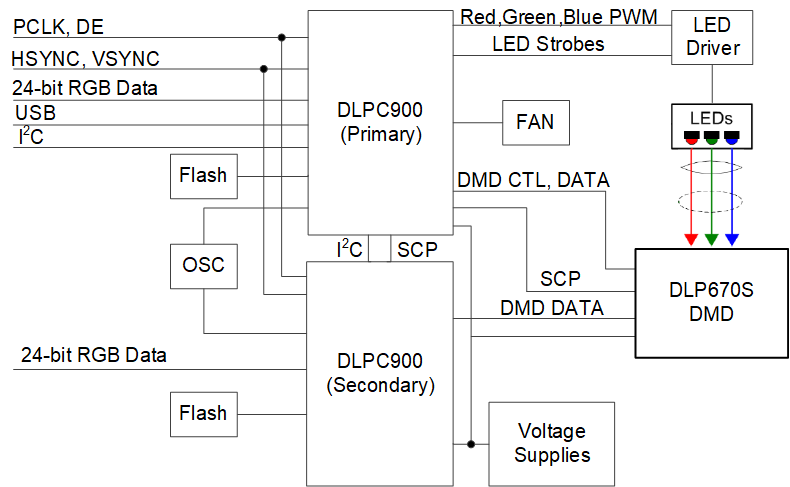DLPS194A November 2020 – June 2022 DLP670S
PRODUCTION DATA
- 1 Features
- 2 Applications
- 3 Description
- 4 Revision History
- 5 Pin Configuration and Functions
-
6 Specifications
- 6.1 Absolute Maximum Ratings
- 6.2 Storage Conditions
- 6.3 ESD Ratings
- 6.4 Recommended Operating Conditions
- 6.5 Thermal Information
- 6.6 Electrical Characteristics
- 6.7 Capacitance at Recommended Operating Conditions
- 6.8 Timing Requirements
- 6.9 Typical Characteristics
- 6.10 System Mounting Interface Loads
- 6.11 Micromirror Array Physical Characteristics
- 6.12 Micromirror Array Optical Characteristics
- 6.13 Window Characteristics
- 6.14 Chipset Component Usage Specification
- 7 Detailed Description
- 8 Application and Implementation
- 9 Power Supply Recommendations
- 10Layout
- 11Device and Documentation Support
- 12Mechanical, Packaging, and Orderable Information
Package Options
Mechanical Data (Package|Pins)
- FYR|350
Thermal pad, mechanical data (Package|Pins)
Orderable Information
3 Description
Featuring over 4.3 million micromirrors, the DLP670S digital micromirror device (DMD) is a spatial light modulator (SLM) that modulates the amplitude, direction, and phase of incoming light. This DMD coupled with its four 2xLVDS input data buses enables the display of high-resolution patterns at very fast pattern rates. The high resolution and fast pattern rates offered by the DLP670S make it well-suited to support a wide variety of industrial, medical, and advanced imaging applications. Reliable function and operation of the DLP670S is enabled in conjunction with dual DLPC900 digital controllers. This dedicated chipset provides flexible and easy-to-program patterns at the high pattern rates necessary to meet the requirements of a variety of end-equipment solutions.
The high resolution provides a direct benefit to the scanning of larger objects in 3D machine vision applications.
Get started with TI DLP® advanced light-control technology page to learn how to get started with the DLP670S. The DLP advanced light control resources on TI.com accelerate time to market, which include evaluation modules, reference designs,optical modules manufacturers, and DLP design network partners.
| PART NUMBER | PACKAGE | BODY SIZE (NOM) |
|---|---|---|
| DLP670S(1) | FYR (350) | 35 mm × 32 mm |
 DLP670S Simplified
Schematic
DLP670S Simplified
Schematic